Reason why JERA is developing its own “emergency food supply”
1 September 2023
Through thermal power generation, JERA supports Japan's energy infrastructure. To always ensure an uninterrupted electricity supply in this disaster-prone country where earthquakes and typhoons occur frequently, what do we need? The issues related to "food" came to light while reviewing the business continuity plan (BCP). Kazuyuki Arita, a responsible for crisis management of JERA reveals why and how they have developed "emergency food supply " anew.
INDEX
If it doesn't exist, we have to make it.
The impetus for developing your own "emergency food supply" was JERA's business continuity plan (BCP). What is the BCP like?
Arita Kazuyuki (Executive Officer, Head of General and Regional Affairs Division): JERA was formed through the merger of the fuel and thermal power divisions of Tokyo Electric Power Company (TEPCO) and Chubu Electric Power Company. Initially, the BCPs of the two companies were inherited and operated. However, because they were BCPs of different companies, they inevitably lacked a sense of unity. For further improvement of business continuity as an infrastructure provider that supports everyone's daily life, we decided that we needed to create a BCP as JERA and formulated a new one in 2021. To ensure that our BCP would not be self-indulgent, we also proceeded to obtain "resilience certification," which requires a third party to examine ours, and we obtained certification at the end of July 2023.
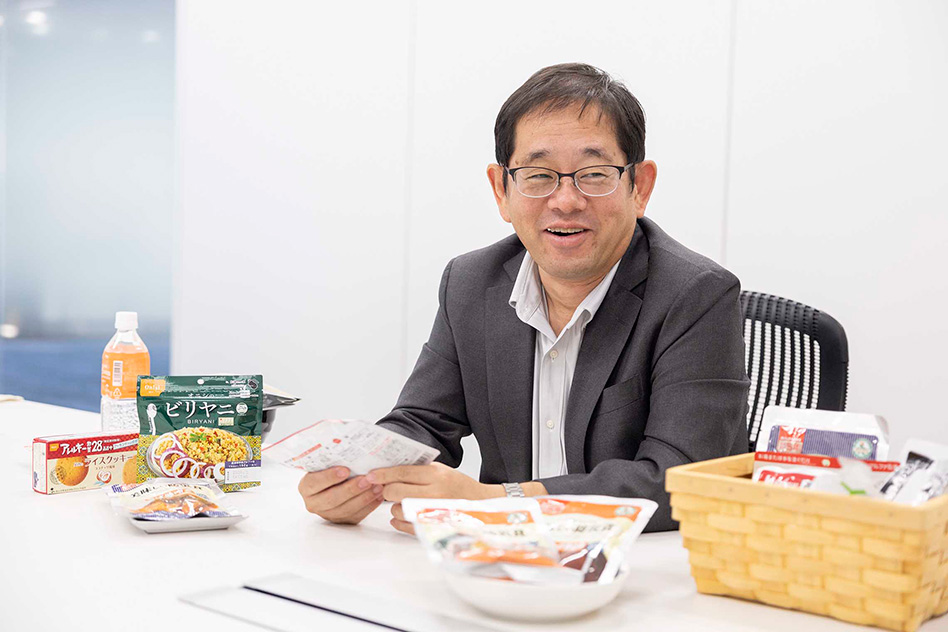
Arita Kazuyuki (Executive Officer, Head of General and Regional Affairs Division)
Why did you decide to develop emergency food supply while formulating a new BCP?
In the past, each business site and power plant at JERA managed its stockpile of food. But it was time-consuming and inefficient for each to purchase and manage their own inventories. A solution that emerged then was to centralize management at the head office. However, when looking into it, we found that each site and plant prepared different foods, and their expiration dates were also different. We realized it was impossible to manage them as they were and decided to create and manage a new "JERA Emergency Food Supply" with standardized contents and expiration dates.
We started by looking for a good stockpile food set on the market. The product we were looking for was for people working in harsh environments, such as at a power plant hit by a disaster, and for people working hard to restore operations. However, many of the common emergency food supply were intended for people waiting for things to calm down at home or in evacuation centers. They were low in calories and were the bare minimum of food needed. Our conclusion was "If something you are looking for doesn't exist, you have to make it." and so began the development of JERA's own emergency food supply.
In the development process, we gathered the people in charge of stockpiling food at the head office, branch offices, business sites and power plants, and established three major policies. The first was "good taste." In the case of a serious emergency, life in the disaster zone can last a long time. We thought that daily meals would be a precious pleasure in such a situation. We focused on creating "something tasting good" rather than simply "something good to eat" or "something nutritious". Each member of the development team searched for and gathered commercially available emergency ration products that seemed appropriate and held tasting sessions to carefully select them. Although it is possible to eat directly from pouches or cans, we received feedback that this would be tasteless for delicious food, so we decided to provide paper plates and other tableware to serve the food so that it could be enjoyed as proper "meals."
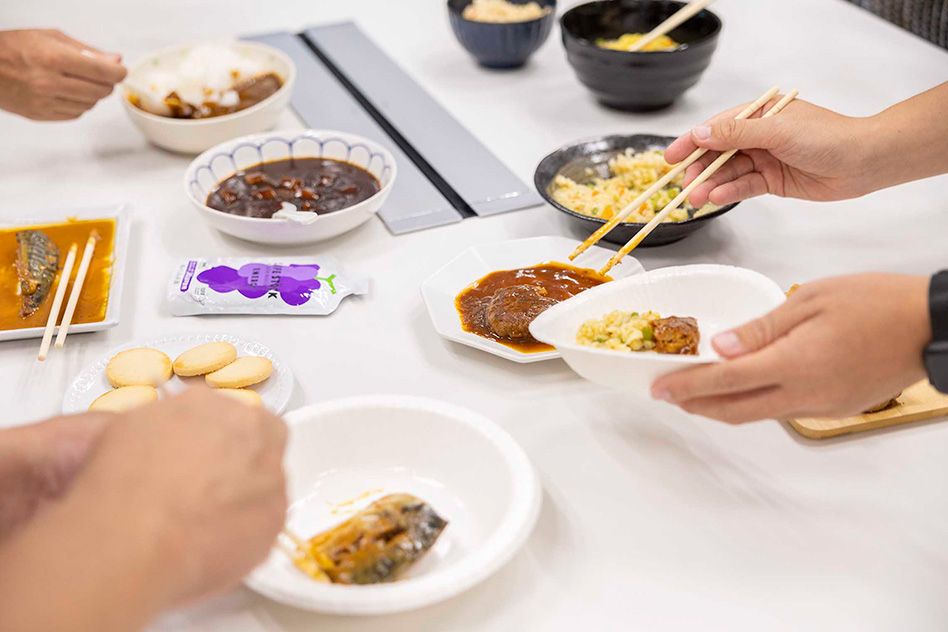
They carefully selected emergency ration products after finding and tasting ones with good reputations for taste.
The second point is "ease of management.” Since different expiration dates for different foods increase the time and effort required for management, all expiration dates are unified as five years. At the same time, instead of managing water, staple foods, and side dishes separately, we decided to manage them as a set of three meals per day for one person in one box. In a disaster, it is simpler and more efficient to distribute "one box per person per day" than to distribute water and food items separately. In addition, we thought it would be easier to secure storage space for the boxes because they would be of a uniform size.
The third point is "effective use without waste.” Until then, stockpiled food about to expire was distributed to those within the company who wished to receive it, and any surplus was discarded. So, we considered donating the stock to food banks. We are expecting the possibility of distributing stockpiled food that is about to expire but still safe to eat to those who need it through the banks.
Based on these three policies, we carefully selected food items and completed the "JERA Emergency Food Supply High-Calorie Set" in one box of one day's worth.
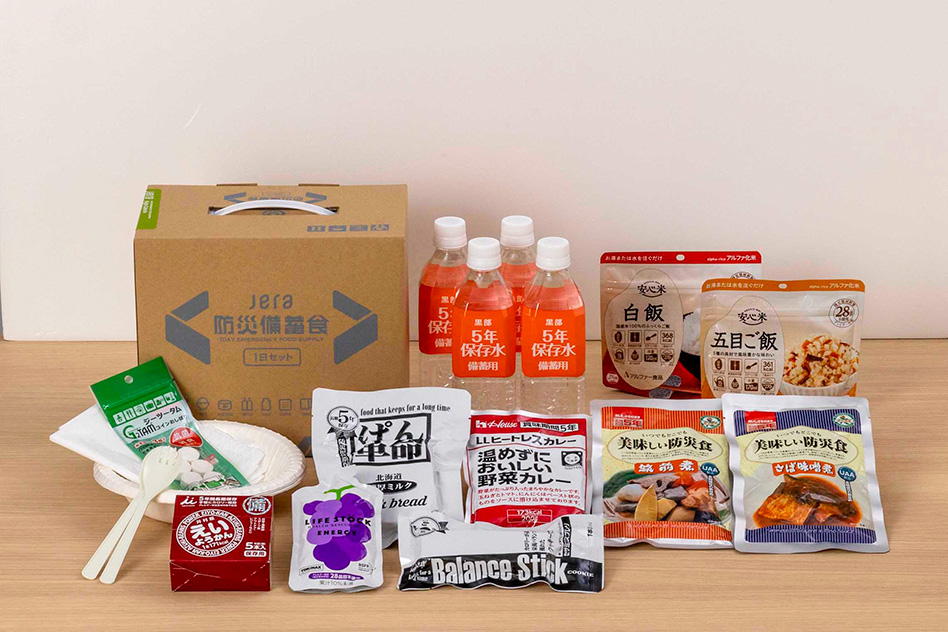
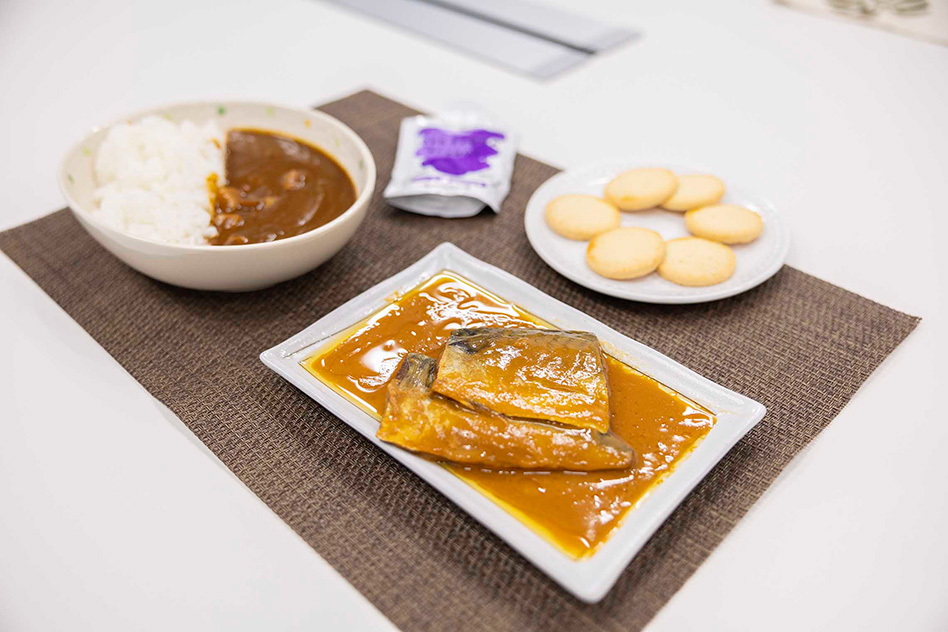
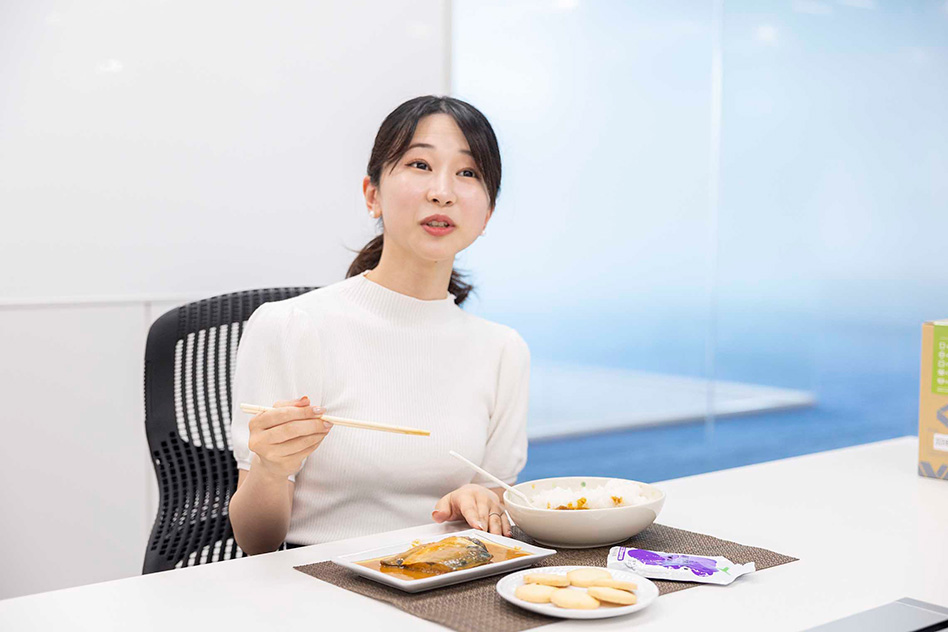
Among varied items in the “High-Calorie Set” they most strongly recommend "mackerel simmered in miso.” Some people say it tastes better than the one they make at home.
Emergency Food Supply that everyone can eat without worries
JERA’s emergency food supply now include five diverse types. Was it your intention from the beginning to create these variations?
Arita: Actually, it was not. When we completed the High-Calorie Set and reported it internally, new opinions came up, such as "Since there are Muslims at JERA, we should have a Halal set that they can eat," and "There should also be a set for people with allergies.” At first, we thought it was necessary to make just one type of meal set, but then we realized it was important to take into consideration the diversity of food cultures and allergies to make rations enjoyable to everyone, so we developed four more new types. As a result, the current lineup consists of five.
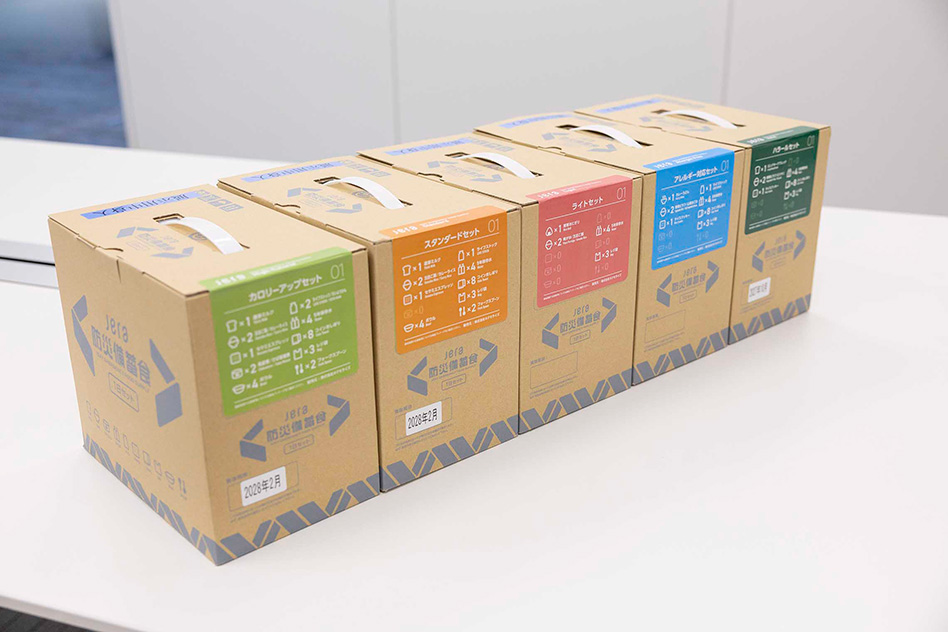

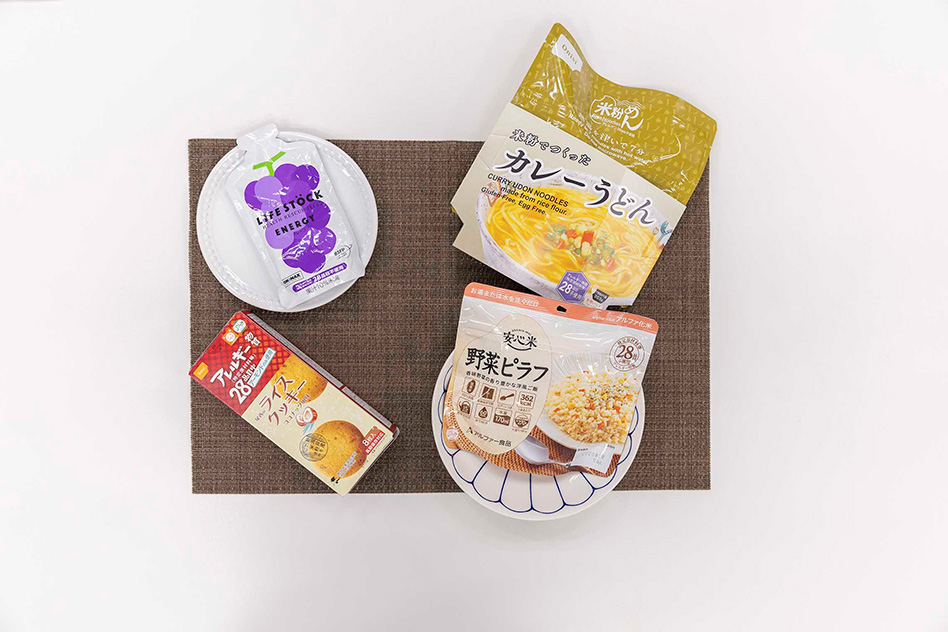
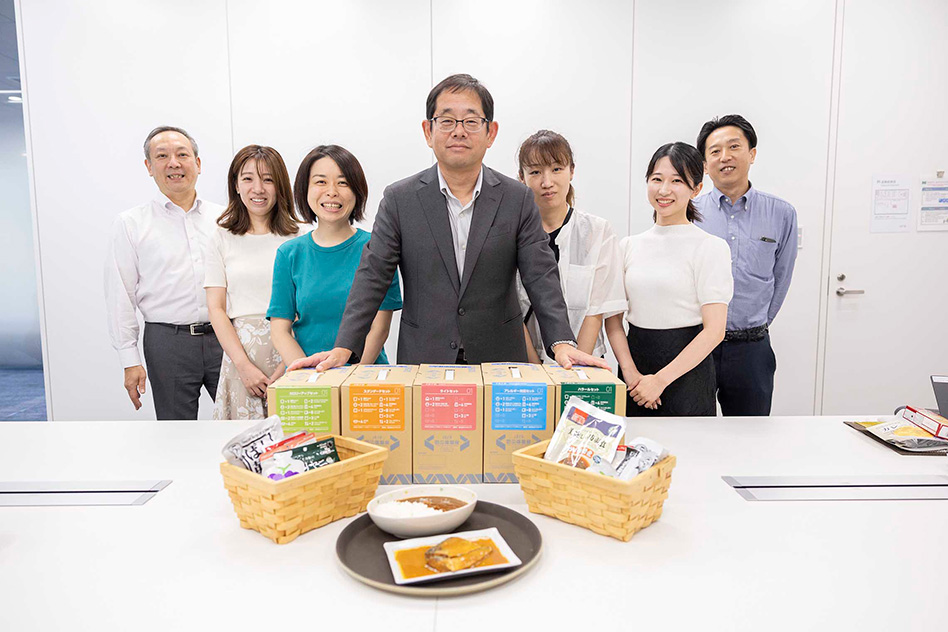
In disaster, people should keep their bodies and minds healthy with rich diets. They have prepared five variations that anyone can eat without worries.
Standard Set:A tasty and satisfying meal set based on curry and rice.
High-Calorie Set:Providing 2,400 kcal per day with three staple meals (curry and rice, beef stew and beef bowl), plus side dishes and snacks.
Halal Set:Halal-certified products including the popular spiced rice dish "biryani" plus bread, cookies, etc.
Allergy-Free Set:A meal set not containing the twenty-eight specified raw materials known to cause allergies.
Light Set:Consisting of rice porridge and rice with soup that are easy for anyone to eat.
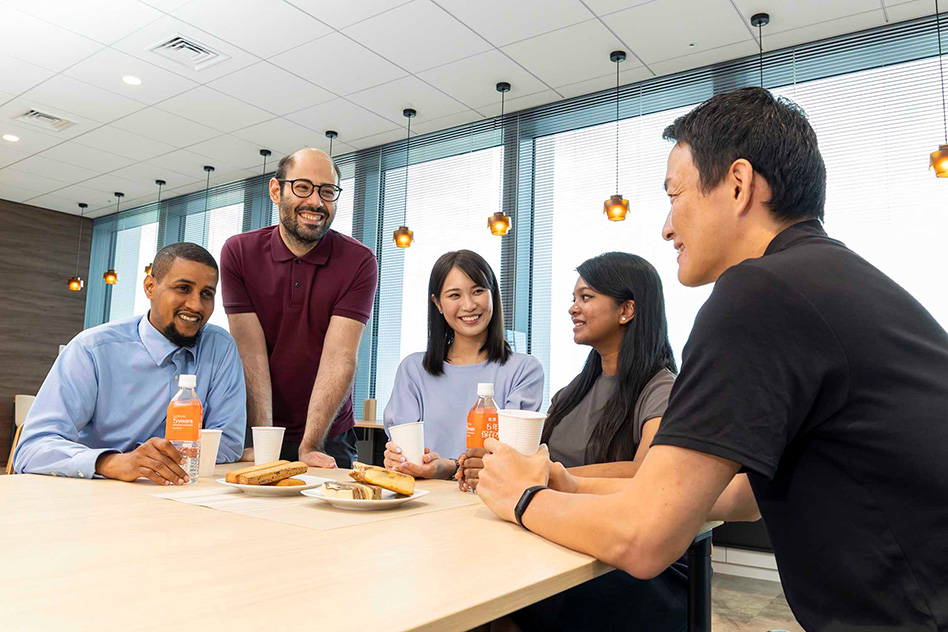
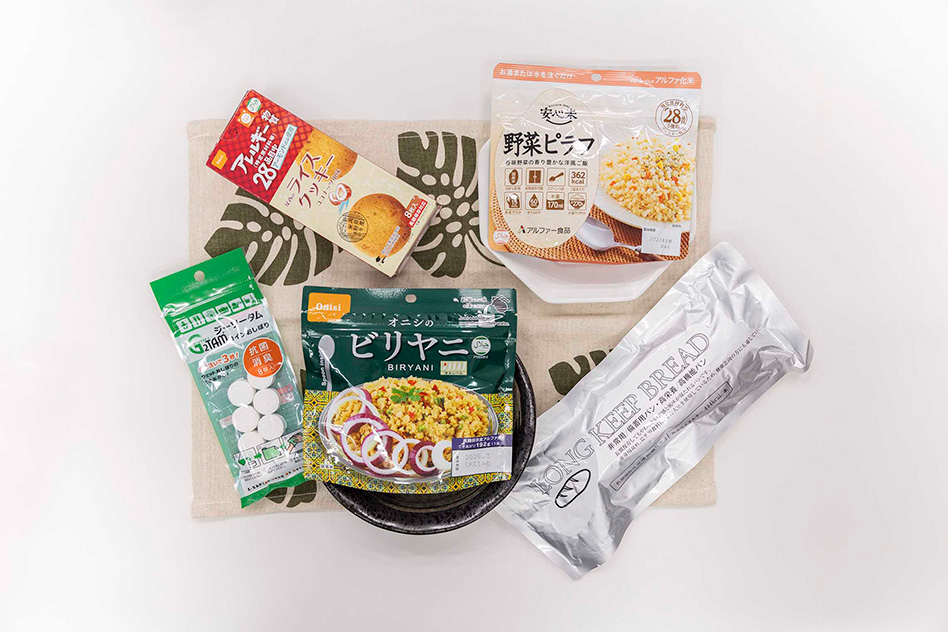
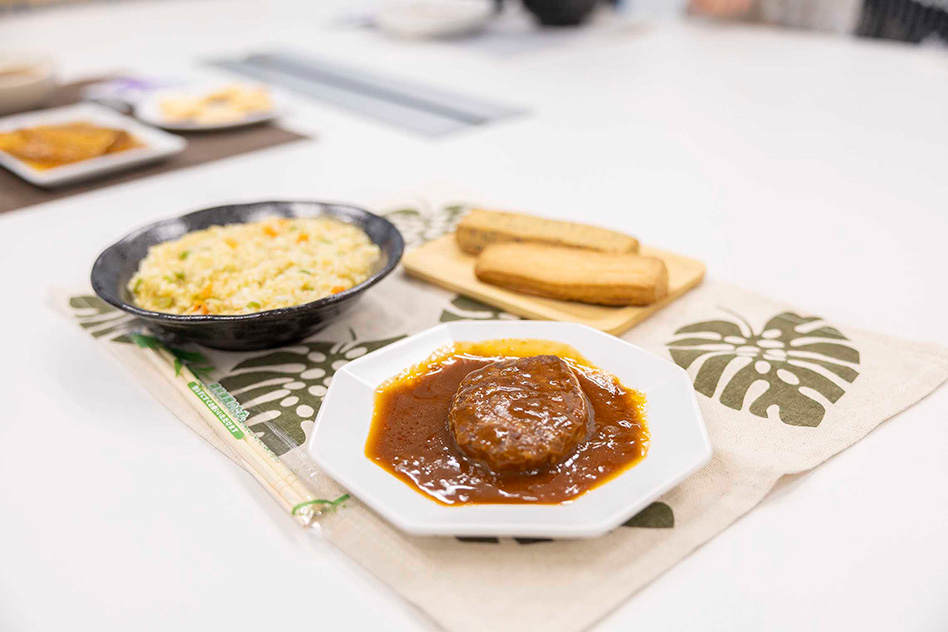
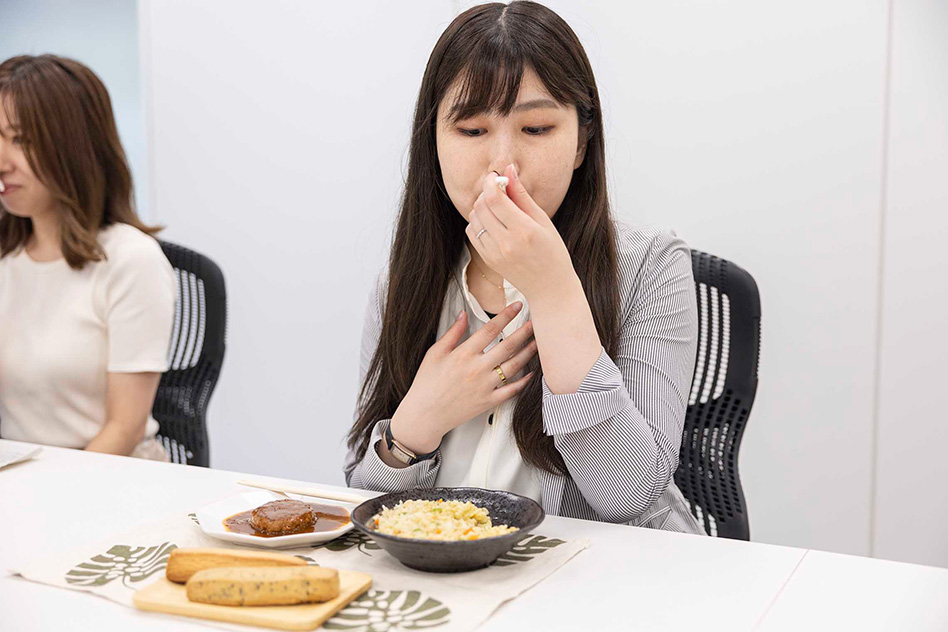
Halal Set is safe for Muslims to eat. The biryani, in particular, was well received by JERA employees who tasted it for the first time during this interview.
The development of Halal sets was particularly difficult. To begin with, there were only a few types of Halal-certified emergency food supply, and the number was even more limited when it came to food with a five-year shelf life. The "biryani" we found was so delicious that when we asked some of our Muslim employees to try it, they endorsed it, saying, "It tastes better than authentic biryani!"
Sharing our disaster prevention expertise with other companies and communities
What kind of initiatives are you considering for "disaster preparedness food" in the future?
Arita: There are two main ideas. The first is about "stockpiles" of non-food items. In a disaster, there are many other necessities in addition to food. Currently, stockpiles that differ among offices and plants are being standardized in the same way as emergency food supply. We feel that only when emergency food supply and stockpiles are all in place, we will be able to ensure safety and security in the event of a disaster.
Another idea we are considering is to sell a set of our emergency food supply, other stockpiles and management systems to our group companies, other companies, and local governments. With our five types of emergency food supply, we exhibited at various exhibitions related to disaster prevention to listen to the opinions of people outside JERA. Many people told us that the one-box-per-day set was very good and easy to manage, and we realized there was a need for "easy management" among people other than ourselves. Currently, we are working on the realization of a service called "Emergency Reserves Optimization Support," a management system providing one-stop support by JERA for everything from the selection, delivery, and disposal of emergency food supply and stockpiles.
On the other hand, we received some comments at the exhibition, such as "We don't need water because we can secure it separately in bulk," and "A one-day set is not enough, so we want a three-day set." We felt that a certain degree of customizability was necessary when considering sales to other companies. However, we believe it is essential to strike a balance because too much customization will prevent cost reductions through mass production and centralized management from functioning.
What other measures are you focusing on to achieve BCP?
Arita: We are particularly focused on the safety and security of our employees' families. This is because at JERA, emergency personnel are required to be onsite to help restore power plants in the event of a disaster. In such cases, if the safety of their family members is not ensured, the employees will not be able to engage in restoration work without worries. Therefore, we have created a booklet titled "JERA Disaster Prevention Guide for Families," which explains the actions that should be taken in the event of a disaster for families. In addition to this, we intend to ensure their safety by providing them with JERA's stockpiled food and supplies at home.
And cooperation with the local communities becomes even more important in any disaster. In addition to our own disaster drills, it is also essential to conduct drills in cooperation with the police and fire departments. We also hold a "Disaster Prevention Idea Contest," in which we invite ideas from within the company on what we can do in the event of a disaster. For example, we explore various initiatives such as "How about using the chimneys and walls of the power plant for projection mapping to inform the local community in the event of a disaster?" and "How can we distribute stockpiled food to people in the neighborhood?"
As an infrastructure provider that supports our daily lives, JERA is taking various measures to prepare for any contingency. We would like to contribute to the realization of a safe and secure society by spreading the knowledge and expertise we have gained through these efforts not only to our group companies but also to other companies and communities.
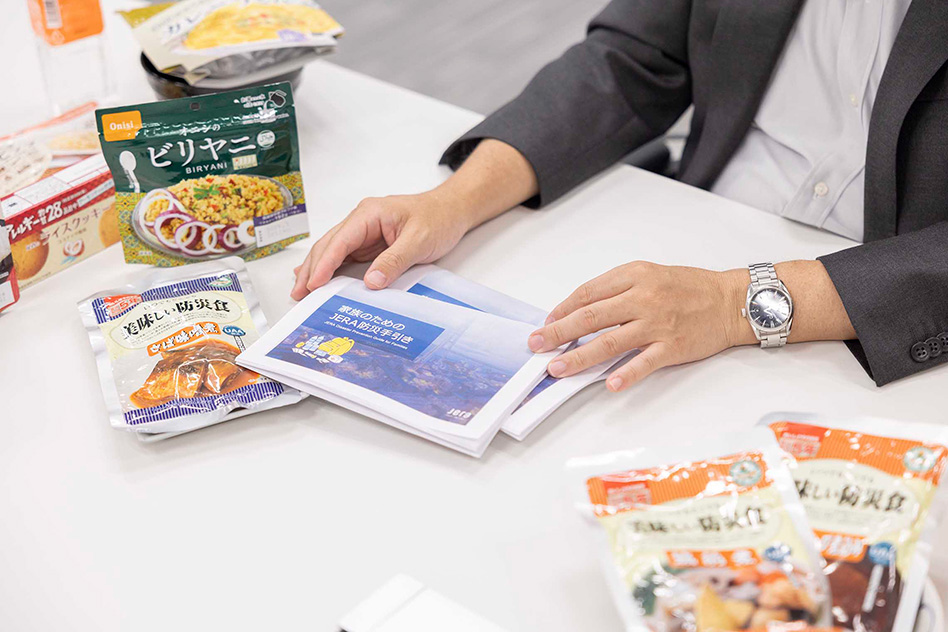
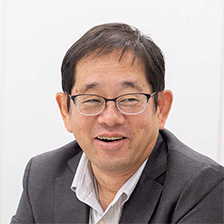
Arita Kazuyuki
Executive Officer, Head of General and Regional Affairs Division
RELATED STORIES
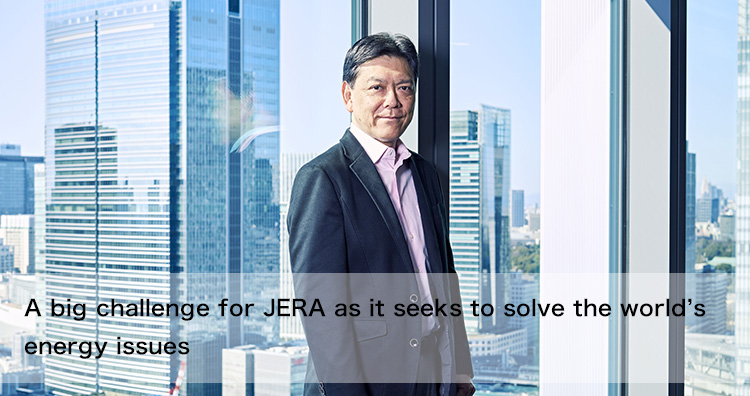
A big challenge for JERA as it seeks to solve the world’s energy issues
This article is based on a Japanese article produced by Forbes JAPAN BrandVoice, which sponsored and translated by JERA.

Front Lines of Thermal Power Generation Where Electricity Is Born for Our Everyday Life.
Ichihara City and Futtsu City in Chiba Prefecture face Tokyo Bay. Both cities are home to JERA's world-class thermal …

